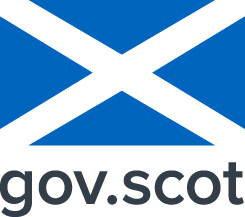Scotland Habitat and Land Cover Map - 2022
Habitat and land cover map created using AI to classify satellite data to EUNIS by Space Intelligence in partnership with NatureScot. This dataset contains three layers:
- A EUNIS level 1 classification of Scotland's land cover for the year 2022 which uses 5 different classes;
- A EUNIS level 2 classification of Scotland's land cover for the year 2022 which uses 28 different classes;
- A change map, which provides predicted land cover changes that occurred between 2020 and 2022. The map is produced through a simple comparison between the 2020 and 2022 maps, where each instance of change identified is interpreted and assigned one of the following descriptors:
(i) Afforestation
(ii) Tree removal
(iii) Agriculture related
(iv) Urban development
(v) Forest growth
(vi) Water gain
(vii) Water loss
(viii) Other changes
Please note, we believe these predicted changes, and others, are inaccurate, mainly due to inaccuracies we have identified in the 2020 map, along with improved methodologies and processes developed at Space Intelligence since the creation of the 2020 map.
The dataset is part of a time series of 20m resolution raster layers, the others being from 2019 and 2020 and the change layer of predicted land cover changes that occurred between 2019 and 2020.
Default
Identification info
- Metadata Language
- English
- Character set
- UTF8
- Dataset Reference Date (Creation)
- 2023-07-01
- Dataset Reference Date (Publication)
- 2023-07-25
- Dataset Reference Date (Revision)
- 2023-07-25
- Identifier
- HLCM2022
- Presentation form
- Digital map
- Credit
-
Maps and data created by Space Intelligence with input and support from NatureScot , © SNH
- Maintenance and update frequency
- Not planned
-
GEMET - INSPIRE themes, version 1.0
-
-
Habitats and biotopes
-
Land use
-
Bio-geographical regions
-
Land cover
-
- Keywords
-
-
Downloadable Data
-
- Use limitation
-
none
- Limitations on Public Access
- Other restrictions
- Other constraints
-
Available under the Open Government Licence v3.0 http://www.nationalarchives.gov.uk/doc/open-government-licence/version/3/
Maps and data created by Space Intelligence with input and support from NatureScot , © SNH
- Use constraints
- Other restrictions
- Other constraints
-
Use the following attribution statement:
Contains public sector information licensed under the Open Government Licence v3.0.
- Spatial representation type
- Grid
- Topic category
-
- Biota
- Environment
))
Temporal reference
Temporal extent
Temporal extent
- Code
- EPSG:27700
Distribution Information
Data format
- Data format
-
Name Version GeoTIFF
-
Transfer options
- Resource Locator
Data quality info
- Quality Scope
- Dataset
- Conformity
- COMMISSION REGULATION (EU) No 1089/2010 of 23 November 2010 implementing Directive 2007/2/EC of the European Parliament and of the Council as regards interoperability of spatial data sets and services
- Explanation
-
This data set is conformant with the INSPIRE Implementing Rules for
the interoperability of spatial data sets and services
- Degree
- true
- Statement
-
Training data were collected through using a combination of the following sources:
• Habitat Map of Scotland (ground polygons)
• 2022 National Forest Inventory
• Ordnance Survey
• High resolution imagery
In all cases the ground data were not used naively: a careful combination of at least two data sources were used to create each polygon, and checking against recent high resolution imagery to ensure each polygon was ‘pure’ (i.e. included only one class) and up to date (for example, if it was a forest polygon, the trees had not been cleared since the data were collected).
Satellite remote sensing datasets used for mapping were Optical Sentinel 2 (S2), Synthetic Aperture Radar (SAR) Sentinel-1, descending and ascending ALOS-PALSAR 2. A complex set of machine learning algorithms were used to produce a Prediction Model, and ultimately a prediction of a class for each pixel.
Through the project duration the sophistication of the models used increased, increasing accuracy and efficiency. For commercial reasons the details of the final algorithms used will not be revealed here.
The CHANGE dataset is a change map, which shows the land cover change that is predicted to have occurred between 2020 and 2022. The map is produced through a simple comparison between the 2020 and 2022 maps, where each instance of change identified is interpreted and assigned one of the following descriptors:
(i) Afforestation
(ii) Tree removal
(iii) Agriculture related
(iv) Urban development
(v) Forest growth
(vi) Water gain
(vii) Water loss
(viii) Other changes
Please note, we believe these predicted changes, and others, are inaccurate, mainly due to inaccuracies we have identified in the 2020 map, along with improved methodologies and processes developed at Space Intelligence since the creation of the 2020 map.
Metadata
- File identifier
- 8462f345-6e9c-45de-b1d2-665a55b9d74a XML
- Metadata Language
- English
- Character set
- UTF8
- Resource type
- Dataset
- Hierarchy level name
-
dataset
- Metadata Date
- 2025-01-28T12:01:40.587Z
- Metadata standard name
-
ISO 19139 Geographic Information - Metadata - Implementation Specification
- Metadata standard version
-
2007
Point of contact
- Individual name
-
GIG Data Supply
- Organisation name
-
NatureScot
- Electronic mail address
-
data_supply@nature.scot supply@nature.sco data_supply@nature.scot
- Role
- Point of contact
 SpatialData.gov.scot
SpatialData.gov.scot